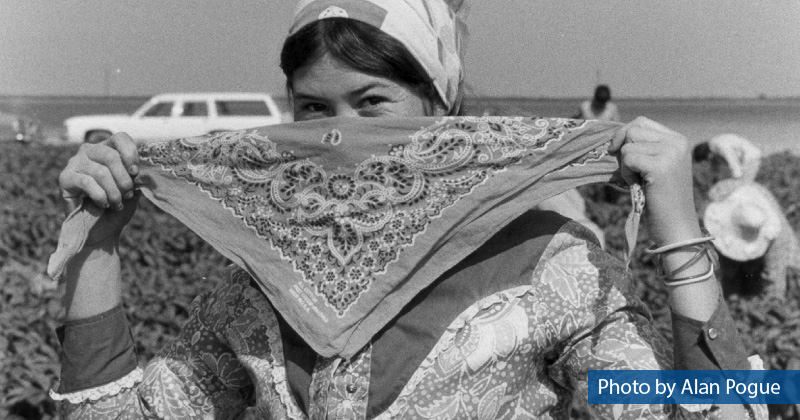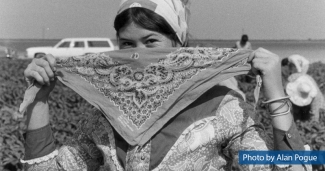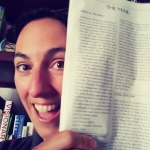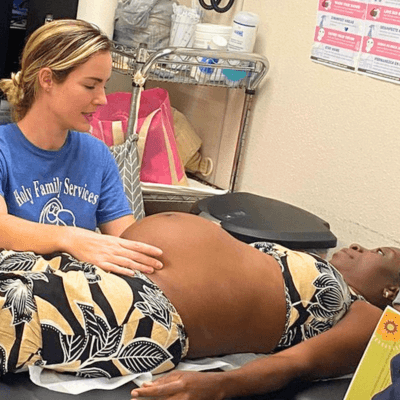Q&A With Dr. Eva Galvez: How Clinicians Can Protect Farmworkers During the COVID-19 Pandemic Through Partnerships and Advocacy

In Oregon, migrant farmworkers will soon begin to arrive to pick the ripe berries for which Oregon is famous. As “essential workers,” farmworkers have labored in fields and orchards across the US throughout the COVID-19 pandemic, and amidst a striking dearth of worker protections. But, thanks to a quickly built partnership, newly arrived farmworkers in Oregon will be protected by emergency worker protections, which came into effect last week. Eva Galvez, MD, a local family doctor at Virginia Garcia Memorial Health Center and MCN board member, in partnership with the Oregon Law Center, is responsible for the emergency changes.
In mid-March, when COVID-19 was declared a pandemic, Nargess Shadbeh, JD, Director of the Farmworker Program at the Oregon Law Center, reached out to Dr. Galvez. The day before, Dr. Galvez had presented at an MCN Spanish-language webinar on protecting workers from COVID-19 along with MCN’s Alma Galvan. Because of the webinar, worker protections were top-of-mind. When Shadbeh called, Dr. Galvez shared her many concerns over worker health during the pandemic, including the troubling prospect of COVID-19 spread in farmworker transportation and housing. Shadbeh recommended they write a joint letter. The letter became a formal petition -- and the petition was granted.
Earlier this week, Dr. Galvez sat down to answer questions on how the letter came to be, why she chose to advocate for her patients, and what she’d do differently in the future. The following has been edited for clarity and brevity.
What were you seeing in Oregon that made you want to act?
I think a lot about advocacy... and this pandemic has really brought this into sharp focus for me. For instance, I can provide education to my patients regarding how the virus spreads and how to reduce spread, but this is most effective when combined with working and living conditions that support these healthy practices.
How is your county responding to the COVID-19 pandemic?
Our community has been hit pretty hard. I’m in Washington County, which is west of Portland, and our county has the second highest rate [of infection in the state]. As of last week we have tested 600 people. Although only fifty percent of those tested are Latino, they represent 97 percent of our positive cases. [Read more about the COVID-19 disparities in Washington Co. here. -Ed] There’s been lots of press about our county and how we’ve been hit particularly hard and I’m concerned that as we get more farmworkers coming in [for the summer], the number of cases could get higher. Our clinic will start mobile testing at labor camps, but my feeling is that our work needs to be combined with worker protections.
What was the process to get this petition approved?
The petition was an outline of our concerns about the capacity of COVID-19 to spread quickly in the current working and living conditions along with concrete steps in field sanitation and labor housing to decrease its spread. Because Nargess understands the current OSHA rules, we were able to write a really strong letter. Nargess felt strongly that we needed to petition for rules -- not just guidelines or recommendations. Because guidelines are not mandatory, they are often not implemented. There were two weeks for people to send in [comments] either supporting or opposing these emergency rules. There was lots of opposition, including the Oregon Farm Bureau, a very strong lobbying group for farmers in Oregon. So last week, when it was announced that OSHA was responding to the many requests on our petition, it was really exciting to see how our work will have a direct impact on keeping farmworkers safe. We didn’t get everything we wanted, but it was a huge step in the right direction.
What was addressed and not addressed in this emergency regulation?
For field sanitation, we got a lot of what we asked for: more bathrooms, extra hand washing stations, assignment of a social distancing officer in the field to help implement social distancing practices, more frequent sanitation of the toilets and handwashing stations, and requirement of at least three feet distancing for workers riding in employer owned vehicles.
Labor housing is still something we’re really concerned about. They still can’t tell us how they’re going to do the social distancing inside the cabins or where they will house a farmworker if one of them does get sick. I want to ensure that they have a safe place to quarantine at no cost if they do come down with the virus.
Why did you choose to partner with a legal nonprofit?
As a clinician, I have a good handle on how the virus spreads and how to reduce spread, but what I don’t understand well are the current OSHA guidelines or the jargon needed to be heard. So, I see our work as a successful medical-legal partnership or collaboration. Usually, clinicians don’t partner with lawyers, but Nargess is a longtime farmworker advocate and is familiar with the challenges that farmworkers face in the field which, combined with knowledge about how COVID-19 spread, was a successful collaboration. And we’re not done. We hope to continue to work together. Now we are looking at ways to push OSHA to commit to having extra housing for farmworkers if they come down with the virus.
How did your health center respond to your advocacy, and how were they involved?
Things moved quickly, so initially I went in on this alone, but my clinic’s name did appear on the petition, so I will be honest that I did feel that I was creating some waves especially as we got more attention in the media. I don’t think I realized that we would get so much attention in the media. For instance, our petition made headlines on the front page of the Oregonian. Things go slowly at community health centers and so not everyone was aware of it at the time.
However, since the passing of the emergency rules, the clinic has been extremely supportive and my hope is to continue to get their support. Part of advocacy I’m finding is learning to be more assertive and being okay to stick out my neck. It has all been worth it and I’m proud to have been part of this work. I do think it’s better to be attached to a health center -- it makes the partnership stronger. And I think if I had gone ‘straight to the top,’ I would have gotten the support I needed from the beginning.
Do you recommend such a partnership for clinicians in other states to pursue?
Yes, you need a clinician that’s willing to look to build the partnerships. It is important to ensure that everyone is working towards the same goals. It really needs to be with someone you can trust. I don’t recommend jumping right into it. Nargess and I had collaborated together on prior projects involving farmworkers so we are familiar with what each of us could bring to the table. We doctors, we see people, we hear people, and people trust us and they often tell us about their work environments, but we often feel like we don’t have the resources to address these conditions, but if you can connect with someone who really understands the labor laws, I think we have the ability to make a positive impact on their working conditions.
Read the petition here, and read more about the emergency rules here.
Like what you see? Amplify our collective voice with a contribution.
Got some good news to share? Contact us on our social media pages above.
Return to the main blog page or sign up for blog updates here.
- Log in to post comments






